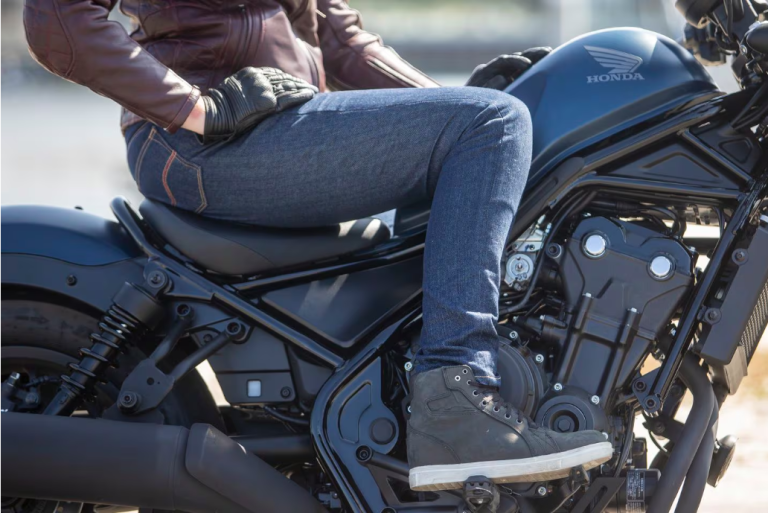A Beginner’s Step-by-Step Guide to Motorcycle Racing
Motorcycle racing is a thrilling and dynamic sport that blends speed, skill, and strategy. Whether you’re looking to race professionally or just want to get started with track days, understanding the basics is essential. In this guide, we’ll walk you through the key steps to getting into motorcycle racing, from choosing your bike to mastering the track.
1. Choose the Right Motorcycle
The first step in getting into motorcycle racing is selecting the right bike. Your choice will depend on the type of racing you want to participate in (e.g., road racing, motocross, or dirt track racing) and your level of experience. Beginners often start with sport bikes that offer a good balance of power and handling.
Tips for Choosing a Motorcycle:
- Start with a beginner-friendly bike: If you’re new to racing, a smaller displacement bike (around 250cc-600cc) can help you develop your skills without being overwhelming.
- Consider the type of racing: Road racing bikes tend to be sportier, while dirt bikes are built for off-road events.
- Go for reliability: Look for a well-maintained bike, as mechanical failure can quickly derail your racing career.
2. Get Proper Gear
Safety is paramount in motorcycle racing. Make sure you invest in the proper gear to protect yourself while riding at high speeds.
Essential Racing Gear:
- Full-face helmet: The most critical piece of safety gear. It should fit snugly and be DOT (Department of Transportation) certified.
- Racing leathers: A full set of leather riding gear (jacket, pants, gloves) provides protection against crashes.
- Gloves and boots: These items help protect your hands and feet during high-speed races and falls.
- Back protector: Adds extra safety and support for your spine.
3. Learn the Basics of Riding
Before diving into competitive racing, it’s crucial to build a strong foundation in riding skills. You can do this through track days, riding schools, or by practicing with an experienced rider.
Key Skills to Focus On:
- Throttle control: Smooth and precise throttle control helps maintain stability and speed.
- Braking techniques: Learn how to brake efficiently without locking up the wheels, especially in corners.
- Cornering: Proper cornering techniques allow you to navigate turns faster and more safely.
- Body positioning: Shifting your body weight in the right way can dramatically improve your bike’s handling.
4. Practice on the Track
Once you’re comfortable with the basics of riding, it’s time to head to the track. Many racetracks offer “track days” for riders to practice in a controlled environment. This is the perfect opportunity to learn how to race without the pressures of competition.
Track Day Tips:
- Start slow: Focus on improving your lines, braking, and throttle control at lower speeds before gradually increasing your pace.
- Get familiar with the layout: Spend time learning the track layout to anticipate turns, braking zones, and acceleration points.
- Consistency is key: Try to maintain a consistent lap time rather than pushing for the fastest lap on your first attempt.
5. Join a Racing League or Event
After you’ve gained some track experience and are feeling confident in your riding skills, it’s time to join a race. You can start by participating in local racing leagues or club events to get a feel for competitive racing.
Types of Racing Leagues:
- Road Racing: This is the most common form of motorcycle racing, taking place on paved roads or closed-circuit tracks.
- Motocross: A thrilling off-road racing series featuring dirt jumps, tight turns, and challenging terrain.
- Endurance Racing: Long-distance events that test both your stamina and your bike’s durability.
- Supermoto: A hybrid race combining elements of motocross and road racing, often held on a mix of dirt and asphalt.
6. Understand Race Strategy
Racing isn’t just about speed; it’s about strategy. As you compete, you’ll need to develop tactics to manage your pace, conserve energy, and outsmart your opponents.
Key Race Strategies:
- Start strong but don’t overdo it: A good launch off the line is important, but pacing yourself early on can prevent mistakes later in the race.
- Know when to push and when to back off: Monitor your bike’s performance and your own physical state. Overexerting yourself early in the race can lead to fatigue.
- Analyze your competition: Learn where your competitors are faster or slower than you, and adjust your tactics accordingly.
7. Continuous Improvement
Racing is a sport where there’s always room for improvement. Even the most seasoned racers continually hone their skills. Take time after each race to review your performance, identify areas for improvement, and work on them during practice sessions.
Ways to Improve:
- Data analysis: Many racers use onboard telemetry systems to gather data about their performance. Reviewing this data can help pinpoint areas for improvement.
- Seek feedback: Don’t hesitate to ask experienced racers or instructors for advice on improving your technique.
- Work on fitness: The physical demands of racing can be intense, so maintaining a strong fitness routine can improve both your stamina and handling.
8. Stay Safe and Have Fun
While racing is all about competition and improving your skills, it’s also important to have fun and enjoy the experience. Always prioritize safety, and remember that motorcycle racing is about pushing your limits while respecting the sport and its rules.
Conclusion
Motorcycle racing is an exciting and challenging sport that requires a combination of skill, strategy, and perseverance. By following this step-by-step guide, you’ll be well on your way to becoming a competitive racer. Keep practicing, stay focused, and most importantly—enjoy the ride!




Hi, this is a comment.
To get started with moderating, editing, and deleting comments, please visit the Comments screen in the dashboard.
Commenter avatars come from Gravatar.